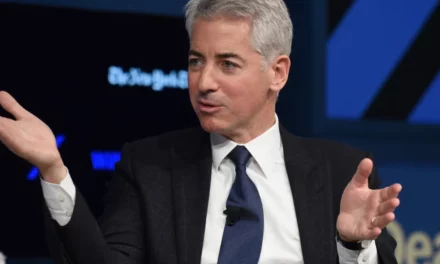We support our Publishers and Content Creators. You can view this story on their website by CLICKING HERE.
Panama, long recognized as the strategic crossroads of the Americas, is taking significant steps to diversify its economy and strengthen its role on the global stage.
Traditionally dependent on the Panama Canal for economic activity, the government is now looking beyond maritime transport. As part of its new vision, Panama is exploring the development of a natural gas pipeline, positioning itself as a key player in the global energy market while fostering peace through commerce.
This move comes amid a broader trend where economic partnerships are reshaping geopolitics.
After Donald Trump’s election, the European Union began negotiating to buy U.S. natural gas, seeking to reduce its reliance on Russian supplies. Russia, in turn, expressed a willingness to end the war in Ukraine, underscoring how economic agreements, rather than traditional diplomacy, can drive peace.
Panama’s strategic diversification into energy aims to leverage similar dynamics, using trade to strengthen diplomatic ties and economic resilience.
Panama’s Strategic Pivot: A Natural Gas Pipeline
At the International Maritime Conference in Houston, Panama Canal Authority (ACP) Administrator Ricaurte Vásquez revealed plans to explore alternatives for expanding the Canal’s role. One of the key proposals under consideration is the construction of a natural gas pipeline, which would serve as an additional revenue stream for the country.
Vásquez stressed that while the Panama Canal remains central to Panama’s economic outlook, expanding into new sectors, including energy, offers an opportunity to diversify. «We are evaluating different options, including pipelines, which will allow us to look beyond maritime transport and take advantage of our geographic location to explore alternative income sources,» Vásquez stated.
This shift represents a departure from previous priorities. When Vásquez took leadership in 2019, the Canal’s primary focus was on maritime traffic, with other revenue-generating options being deprioritized. Now, Panama is positioning itself to capitalize on its unique location—much like Singapore did by turning its strategic position into a global refining hub. Panama hopes to do the same by becoming a key player in the global energy trade.
Strengthening Ties: Panama and Texas
Panama’s location and its strategic ties with Texas further underscore the potential for this new direction. According to Forbes Central America, the Panama Canal handles approximately 3% of global trade. In fiscal year 2024, the Canal transported 423 million tons of cargo, with projections to increase that figure to 520 million tons by 2025. Notably, Texas ports account for 23% of the Canal’s traffic, or about 63.5 million tons, with the Port of Houston being the largest customer of the Canal in the United States. Houston handles 3.9 million tons of containerized cargo and 42.7 million tons of oil and petroleum products.
Panama’s deepening ties with Texas are critical as the U.S. state plays a vital role in the global energy market. By exploring the construction of a natural gas pipeline, Panama is set to strengthen its position not only as a global trade hub but also as a key player in the energy sector, facilitating the movement of energy products between continents.
Climate Resilience: A Gas Pipeline as a Buffer Against Drought
In addition to economic diversification, Panama’s plans for a gas pipeline are also a strategic response to climate change. The country faces seasonal dry spells, particularly exacerbated by the El Niño phenomenon, which can reduce water levels in the Panama Canal, impacting shipping traffic. The 2023-2024 El Niño season, for example, forced the Canal to limit ship drafts and reduce the number of transits by 21%, affecting both cargo capacity and revenue.
In contrast, an underground natural gas pipeline would be less vulnerable to climate variability. By building this climate-resilient infrastructure, Panama can ensure its economic stability during extreme weather events, safeguarding its role in global trade while opening new revenue streams in energy.
A New Chapter for Panama’s Economy
By expanding into the energy sector with a natural gas pipeline, Panama is not only reinforcing its global trade significance but also positioning itself for long-term economic diversification. This shift would help Panama reduce its dependency on a single industry, providing new sources of revenue while insulating the economy from the effects of climate change and geopolitical instability.
As Panama continues to leverage its geographic advantages and deepen its economic relationships—especially with key partners like Texas—it is set to play an even more integral role in global trade and energy. By promoting peace through commerce and expanding its reach in the energy sector, Panama is paving the way for a future defined by economic resilience, strategic partnerships, and strengthened diplomatic ties across the globe.
About The Author
María Herrera Mellado es una abogada respetada, licenciada en EE.UU. y España, con un doctorado en Ciencias Jurídicas y títulos de la Universidad de Granada, la Universidad de Arizona y la Florida International University. Con amplia experiencia en derecho internacional, inversiones, inmigración, derechos humanos, protección de la privacidad y lucha anticorrupción, ha asesorado a organizaciones y políticos hispanoamericanos. Ha escrito sobre seguridad nacional e inmigración, protección de datos, derecho constitucional, consumo financiero y derecho bancario en revistas internacionales y coescribió libros publicados en Perú y Colombia. Reconocida por su servicio comunitario, es considerada una de las mujeres más influyentes de Florida. Es experta en varios idiomas y participa frecuentemente en debates en canales como Univisión y Telemundo
María Herrera Mellado is a highly respected attorney, licensed to practice in both the U.S. and Spain. She holds a PhD in Legal Sciences and has earned degrees from prestigious institutions, including the University of Granada, the University of Arizona, and Florida International University.With extensive expertise in business law, immigration, human rights, consumer protection, privacy protection, and anti-corruption, María has advised a wide range of organizations and Hispanic American politicians. She has published numerous articles on data protection and banking law in international legal journals and co-authored books on these topics, which have been published in Peru and Colombia. Known for her strong commitment to community service, María is recognized as one of the most influential women in Florida. Fluent in multiple languages, she frequently participates in high-profile debates on networks such as Univisión and Telemundo, where she shares her insights on key legal and social issues.

 Conservative
Conservative  Search
Search Trending
Trending Current News
Current News 





